Rainbow Subspecies
Redband Trout are subspecies of the rainbow trout and exist in two well-defined geographic regions in the Western United States.
The EcoAngler Report
Researching the McCloud Redband? Get scientific based angling intel in The EcoAngler Report - McCloud Redband.
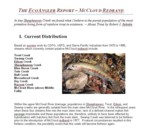
Detailed information on it's range along with a map and directions to put you in reach of this native redband can be purchased here.
An Adobe PDF document will be made available at the end of the purchase check-out. Select Return to the Ecological Angler to view your copy of The EcoAngler Report - McCloud Redband.
Rainbow Trout
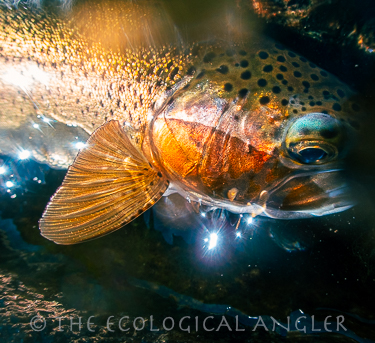
The Coastal rainbow trout species includes two unique life histories. Rainbows which live out their entire life in freshwater and anadromous steelhead which live in both coastal streams and the ocean. Consequently, rainbow trout and steelhead get classified as the same species but exhibit very different life histories.
Adult rainbow trout are usually silvery with numerous black spots on the tail, adipose fin, dorsal fin, and back. The cheeks are pinkish (illustrated in picture below), the back is iridescent blue to nearly brown, the lower sides and belly are silver, white, or light yellow.
The next picture shows the rainbow's signature iridescent pink to red band which dominates across their lateral.
Rainbow trout in their early years are typically found in cool, clear, fast flowing streams where riffles predominate over pools and they can take cover under stream-side vegatation or undercut banks. For stream resident rainbows, their preferences vary with their size and the time of year. Most often, the smallest rainbow trout are found in riffles. The intermediate size rainbows dwell in runs, and the large adults dominate the pools. A key attribute for all rainbow trout in their habitat is cool water temperature.
Stream Feeding
Stream resident rainbow trout feed mainly on drifting aquatic and terrestrial insects. The stomach of a rainbow trout taken from a healthy stream would likely contain a mix of terrestrial insects, adult and emergent aquatic insects, insect larve, and the ocassional small fish. Individual rainbow trout tend to specialize in the organisms on which they feed (i.e., habitual feeders). Their diet changes with size with larger rainbows tending to take larger prey (e.g., other small fish).
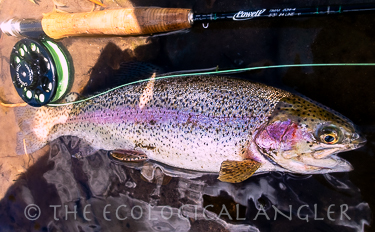
Lake Feeding
In lakes, resident rainbow trout will vary their deit depending on the availability of food. Benthic invertebrates and zooplankton are preferred, but terrestrials will be eaten if other food is scarce. In Eagle Lake, in the summer months, large Eagle Lake rainbow trout will commonly have a stomach filled with zooplankton while other trout from the same lake will have gorged on leeches, caddisflies, or snakes. I've heard this observation first-hand from Jay Fair as well. In late summer, early fall, will likely switch to feeding on small fish, especially the abundant tui chubs. If fishing Eagle Lake in late October through November, you'll do well to locate schools of tui chub.
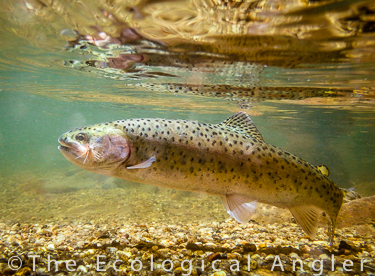
Rainbow Trout - California Range Map
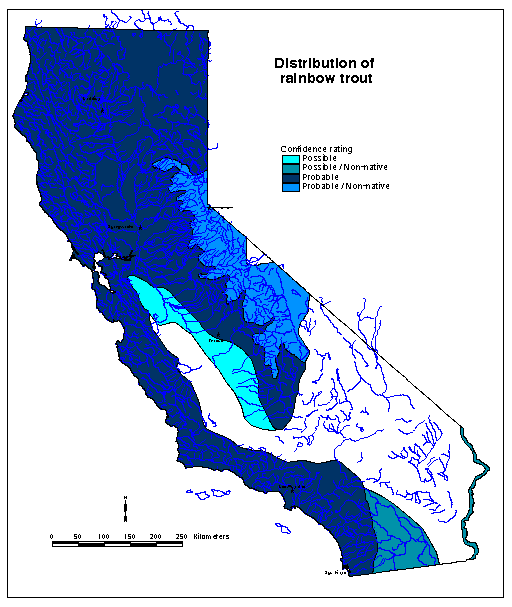
Range Map Provided by the Department of Wildlife and Fisheries Conservation Biology at UC Davis
